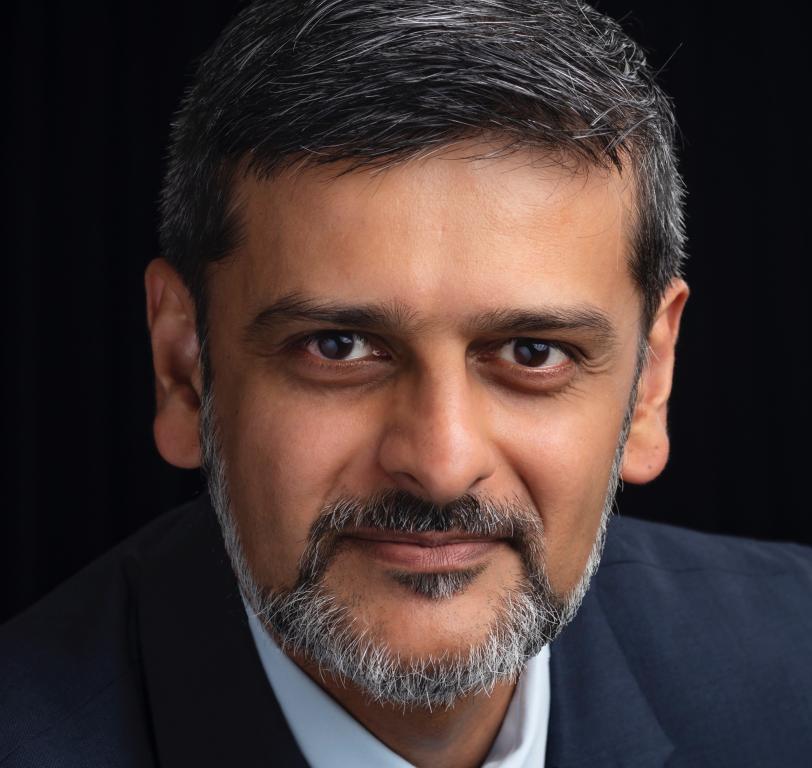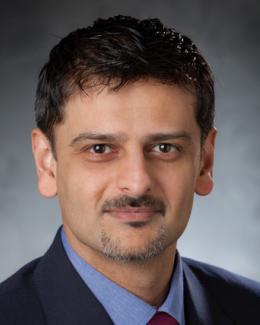
Anuj J. Kapadia, who leads the Advanced Computing in Health Sciences Section at the Department of Energy’s Oak Ridge National Laboratory, was named a 2024 Fellow by the American Association of Physicists in Medicine, or AAPM. AAPM is one of the world’s leading medical physics organizations with a mission to advance medicine through excellence in the science, education and professional practice of medical physics. A longtime member, Kapadia was also recently elected president of the organization’s Southeastern chapter.
Of the approximately 10,000 AAPM members across 94 countries, Kapadia is one of just 767, or 6.8%, who have been awarded the prestigious Fellow distinction.
“The Fellow designation is bestowed upon members who have demonstrated exceptional contributions in research, education or leadership within the medical physics community,” the AAPM said in a statement.
The distinction comes after a long-standing career of scientific pursuit in advancing medical science, both in academia and now with ORNL. As a researcher, Kapadia’s work has spanned the medical physics world, including x-ray and neutron simulations, medical imaging technologies, radiation symmetry and digital twins to optimize treatment options for patients suffering from cancer or other diseases that utilize radiation. Today, Kapadia’s work incorporates high performance computing to perform even more advanced simulations using ORNL resources such as Frontier, the world’s first exascale supercomputer.
For Kapadia, this fellowship harkens back to his lifelong love for the medical field and his natural talent for engineering that he discovered as a young man.
“When I think back to when I was a child, I always thought I would be a doctor,” Kapadia said. “Then, I realized that I had a knack for engineering and physics. As I progressed through my scientific career, I came across this field of medical physics, which combined my love of physics and engineering with my love of medicine.”
Kapadia joined ORNL in 2020, bringing a career in biomedical health research that spanned more than two decades and includes work in neutron and x-ray scattering, Monte Carlo simulation development and data analytics for security and medical applications. Currently, Kapadia manages the health sciences section working on a wide range of projects, including biomedical informatics, scalable computational modeling for health, and multiscale simulations and modeling that explore the human body from the atomic level to whole populations to optimize health outcomes.
Kapdia’s work with AAPM began during his time with Duke University, where he earned his doctorate in biomedical engineering and later spent over a decade working as a faculty member in radiology, physics and medical physics, and later as the director of graduate studies for the Duke Medical Physics Program. Kapadia emphasized the important role AAPM plays in academia and for students entering the field.
“While at Duke, I was engaged with AAPM in identifying priorities in medical physics from an educational perspective so that we could make sure those priorities were appropriately reflected in our program,” Kapadia said. “We also wanted to ensure our students left with the right mindset and the right tools to go and seek their next positions as medical physicists.”
Medical Physics is a field that’s at the intersection of physics, engineering and medicine. The recognition of fellowship from the AAPM is both an honor and a testament to my work in this field. I am proud and grateful to receive this recognition.
— Anuj J. Kapadia
Born out of the use of radiation in medicine, medical physics includes medical procedures like radiation treatments and the diagnostic use of radiation, such as CT scans, x-rays, radiography and tomography. The AAPM acts as a guiding body engaging in the technical aspects and professional standards of medical physics and advising medical physics practices throughout the country and around the world.
“Medical Physics is a field that’s at the intersection of physics, engineering and medicine,” Kapadia said. “The recognition of fellowship from the AAPM is both an honor and a testament to my work in this field. I am proud and grateful to receive this recognition.”
UT-Battelle manages ORNL for the Department of Energy’s Office of Science, the single largest supporter of basic research in the physical sciences in the United States. The Office of Science is working to address some of the most pressing challenges of our time. For more information, visit https://energy.gov/science. — Mark Alewine



